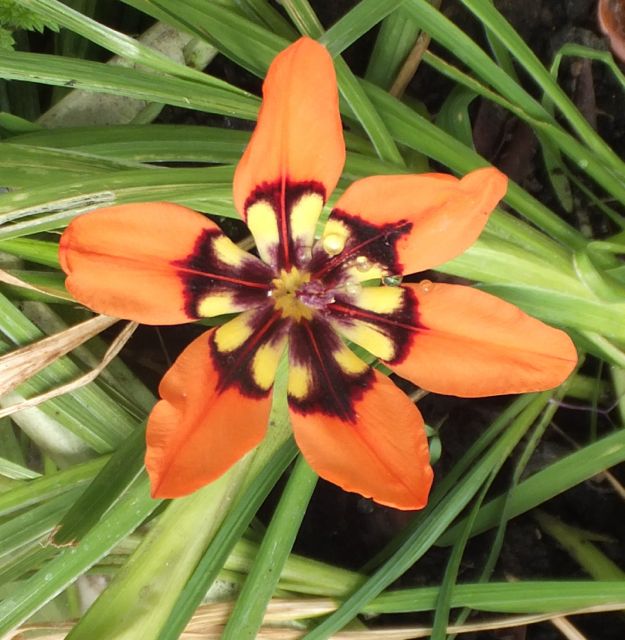 This stunning cool greenhouse flower gives off colours no pictures can capture. In the flesh Sparaxis blooms have an unmatched day-glow intensity of brilliance. You really have to see these with the naked eye to appreciate their luminosity. They’re pretty anyway and make excellent cut flowers as they last well.
This stunning cool greenhouse flower gives off colours no pictures can capture. In the flesh Sparaxis blooms have an unmatched day-glow intensity of brilliance. You really have to see these with the naked eye to appreciate their luminosity. They’re pretty anyway and make excellent cut flowers as they last well.
Sparaxis tricolour is now the Harlequin flower though in its native South Africa it was known as the Wand flower. It’s sometimes confused with the Corn lilies, Ixias, which are remarkably similar plants from the same Cape region requiring much the same treatment. These both need an autumn through to spring growing period of cool moist culminating in flowering, then a parching dry, long, hot summer during which they go dormant.
Sparaxis could not be easier if you purchase corms, and these are remarkably inexpensive. You could start with seed if you’re patient but it can take several years to get corms to flowering size. So buy a mixture of corms and plant these in batches from late autumn on then you can have flowers for cutting over several weeks the following late spring and early summer.
Plant the corms at twice their own depth in deep pots or bowls of sandy free draining compost and water most sparingly. Keep them most definitely frost free but no more than cool. Critically their compost must never be wet but only just moist. In mid winter the plants will start into growth increasing in vigour as the days lengthen. Be careful to keep their compost moist but still never ever wet. I find the best method is to stand their containers in a shallow tray of warm water just sufficiently long enough to wet the very bottom of their compost and then to immediately remove and stand them to drain.
In late spring the flowering stems appear and by early summer you have a most gorgeous display. If you need super straight  stems for cutting then tie each to a short cane or grow them up through a net support as they do have a tendency to flop.
stems for cutting then tie each to a short cane or grow them up through a net support as they do have a tendency to flop.
After flowering has finished stop watering and dry the plants off in their compost. Once their leaves die down put their containers somewhere really dry and quite warm such as an airing cupboard. Leave them there till autumn when you start again.
Collectors may appreciate some others of this small genus. The finest is S. elegans, once known as Streptanthera elegans or S. cuprea. This has white flowers with purple centres. Sparaxis bulbifera has funnel shaped blooms with but only three or so flowers per stem. The larger flowered S. grandiflora has purple and yellow blooms and more per stem.
Oh yes, I forgot to say, back in the Cape their corms were eaten, useful to know in an emergency.


